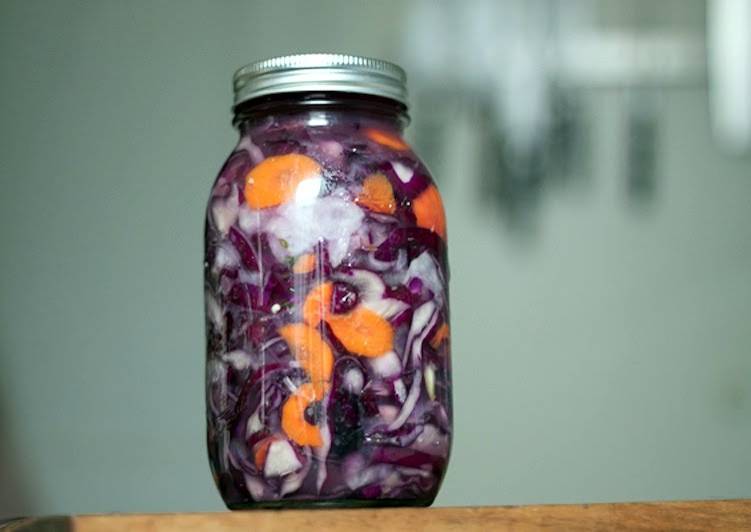Kimchi. Ponytail Kimchi (Chonggak kimchi: 총각김치). Огуречный кимчи (oisobagi kimchi) и суп из редьки с говядиной. Although many people get a chill through their spine at the very mention of the Although the popularity of kimchi is still rising in the West, it is an ancient dish, dating about two. Kimchi is a traditional Korean dish made of seasoned vegetables and salt.
 Kimchi, also spelled gimchi or kimchee, refers to a traditional Korean fermented dish made of seasoned vegetables.
The most common Korean banchan, Koreans eat kimchi eaten with rice along with other banchan dishes.
This kimchi recipe shows you everything you need to know about how to make traditional cabbage kimchi.
You can Cook Kimchi using 7 ingredients and 19 steps. Here is how you cook that.
Kimchi, also spelled gimchi or kimchee, refers to a traditional Korean fermented dish made of seasoned vegetables.
The most common Korean banchan, Koreans eat kimchi eaten with rice along with other banchan dishes.
This kimchi recipe shows you everything you need to know about how to make traditional cabbage kimchi.
You can Cook Kimchi using 7 ingredients and 19 steps. Here is how you cook that.
Ingredients of Kimchi
- It's 3 lb of Red cabbage.
- It's 3/4 lb of Daikon radish.
- Lets Go Prepare 1/2 lb of Yellow onion.
- It's 5 of to 10 cloves Garlic.
- What You needis 1/2 lb of Carrots.
- What You needis 2 of to 6 Thai Chilis.
- Lets Go Prepare 2 tbsp of Kosher Salt or Sea Salt.
Your special batch will arrive vacuum sealed with a gel pack and an insulated bag via priority mail. Kimchi is a traditional Korean dish and is a major staple in Korean cuisine. This easy Kimchi recipe will teach you to make authentic Kimchi (Kimchee) at home. It's easy to do with these simple steps!
Kimchi step by step
- Start by slicing the red cabbage in half, then quarters, so it'll be easier to work with..
- Slice all of the cabbage into strips about 1/4" thick. Put the cabbage into a bowl and set it aside..
- Slice all the daikon radish into thin coins. We slice everything super thinly to create as much surface area as possible! This will make it easier for the salt to do its work. The thicker it is, the longer it'll take to ferment..
- Add the radish to the same bowl as the cabbage..
- Trim and peel all of the onion. Thinly slice the onion and add it to the bowl..
- Peel all of the carrot..
- Now slice the carrot into thin coins and add it to the bowl..
- Peel 5-10 cloves of garlic, depending on how strong you like it, and smash the cloves..
- Add the garlic to the other vegetables in the bowl..
- Mince 2-6 Thai chilis into a fine paste. You'll start by cutting them into small slices then going over it all again with your knife to mince it even more finely..
- Add the chili to the bowl..
- It's time to mash those vegetables. Add 1/8 cup of salt (that's 2 tbsp) to the vegetables..
- Use your hands to squeeze and mash the vegetables and salt. Continue to do this until the vegetables start to leach water..
- Once water has leached out of the vegetables, set the bowl aside for 30 minutes. This will allow the salt to draw more water out of the vegetables. Clean up and relax!.
- After the 30 minutes are up, tightly pack the vegetables into your 1 quart mason jar. Make sure there is enough liquid in the jar so that the vegetables are submerged..
- Put the lid on the jar and place it on your kitchen counter. Leave it at room temperature for at least 7 days. The bacteria need to be at room temperature to multiply and ferment..
- At least once a day, slowly open the lid to release the gases that build up. Hold your jar in the sink when doing this, for it’s sure to spray! Be sure to taste the ferment periodically. Once it tastes right to you, put it in your fridge..
- If the water level of the ferment drops below the vegetables, just add more of the mixture if you have any left over. If not, just add more water along with a pinch of salt, until the vegetables are submerged..
- Be sure to take a before and after picture of your kimchi. Watch it change color over time - it's a fascinating process. Post it on Twitter or Instagram with the hashtag #fermentfeast and we'll share it on the website..
Kimchi is a traditional Korean dish of fermented vegetables, the most. Kimchi is a spicy side dish made from fermented vegetables and Korean red pepper, and is loaded with potential health benefits. It is a staple of the Korean diet, and its popularity has surged worldwide. See more ideas about Kimchi recipe, Kimchi, Maangchi. How to make Kimchi-bokkeumbap (or kimchi bokkeumbap, kimchi bok eum bap, kimchi bokkeum bap, gimchi bokkeumbap), Kimchi fried.